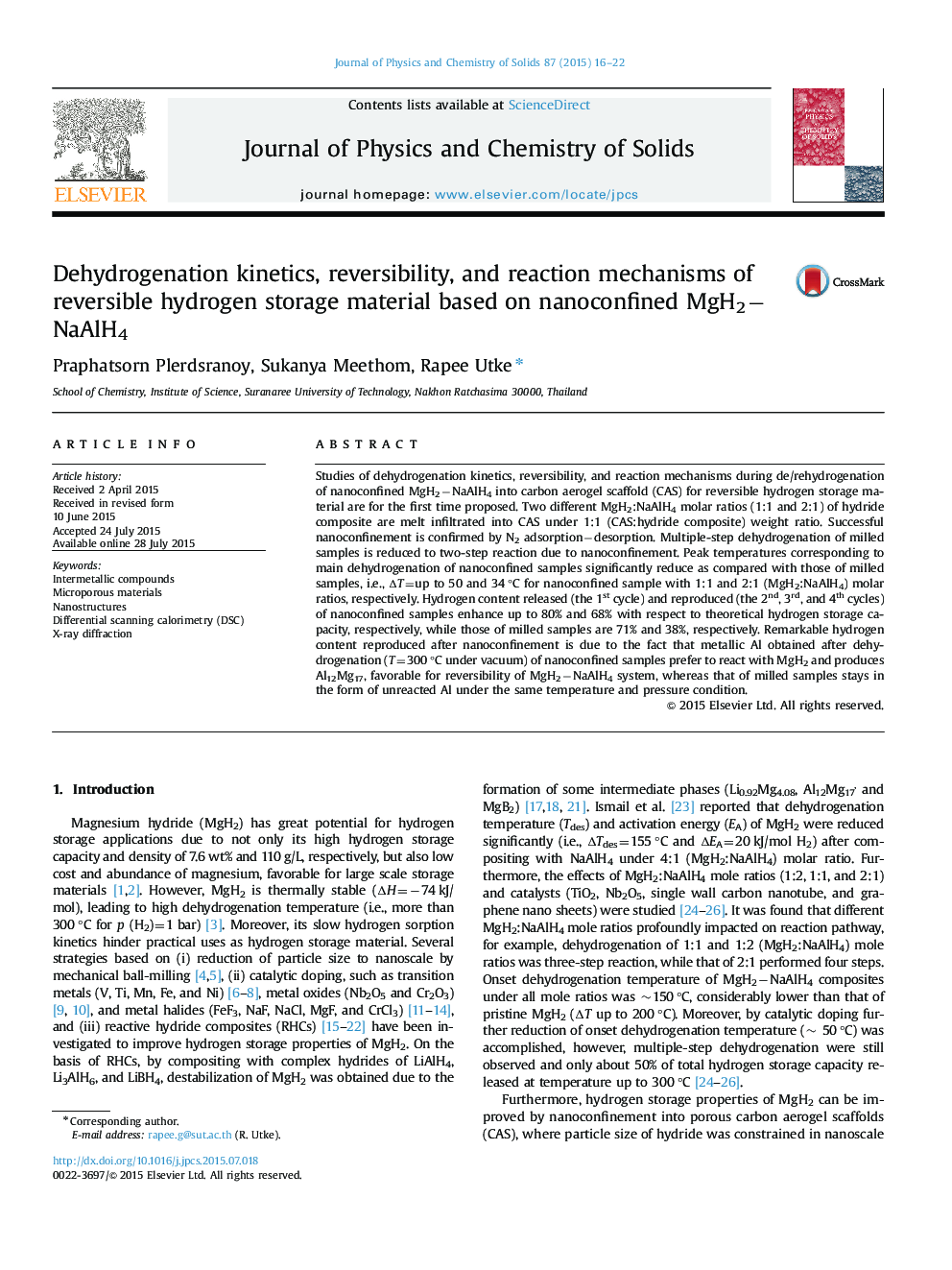| Article ID | Journal | Published Year | Pages | File Type |
|---|---|---|---|---|
| 1515410 | Journal of Physics and Chemistry of Solids | 2015 | 7 Pages |
Abstract
Studies of dehydrogenation kinetics, reversibility, and reaction mechanisms during de/rehydrogenation of nanoconfined MgH2âNaAlH4 into carbon aerogel scaffold (CAS) for reversible hydrogen storage material are for the first time proposed. Two different MgH2:NaAlH4 molar ratios (1:1 and 2:1) of hydride composite are melt infiltrated into CAS under 1:1 (CAS:hydride composite) weight ratio. Successful nanoconfinement is confirmed by N2 adsorptionâdesorption. Multiple-step dehydrogenation of milled samples is reduced to two-step reaction due to nanoconfinement. Peak temperatures corresponding to main dehydrogenation of nanoconfined samples significantly reduce as compared with those of milled samples, i.e., âT=up to 50 and 34 °C for nanoconfined sample with 1:1 and 2:1 (MgH2:NaAlH4) molar ratios, respectively. Hydrogen content released (the 1st cycle) and reproduced (the 2nd, 3rd, and 4th cycles) of nanoconfined samples enhance up to 80% and 68% with respect to theoretical hydrogen storage capacity, respectively, while those of milled samples are 71% and 38%, respectively. Remarkable hydrogen content reproduced after nanoconfinement is due to the fact that metallic Al obtained after dehydrogenation (T=300 °C under vacuum) of nanoconfined samples prefer to react with MgH2 and produces Al12Mg17, favorable for reversibility of MgH2âNaAlH4 system, whereas that of milled samples stays in the form of unreacted Al under the same temperature and pressure condition.
Keywords
Related Topics
Physical Sciences and Engineering
Materials Science
Electronic, Optical and Magnetic Materials
Authors
Praphatsorn Plerdsranoy, Sukanya Meethom, Rapee Utke,
